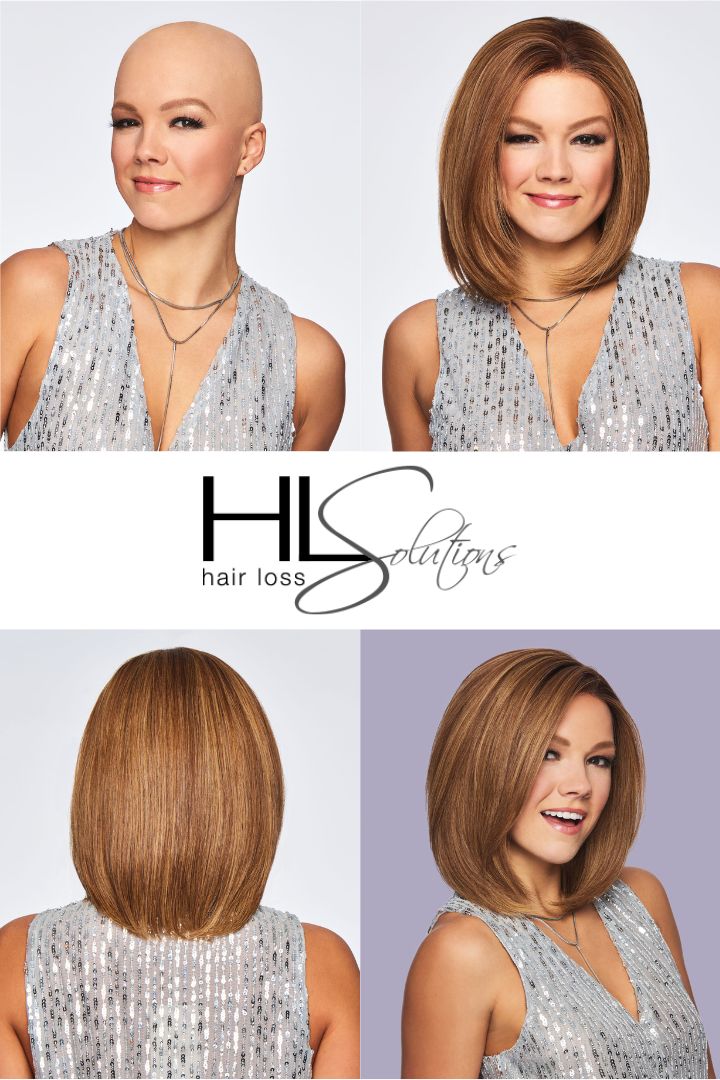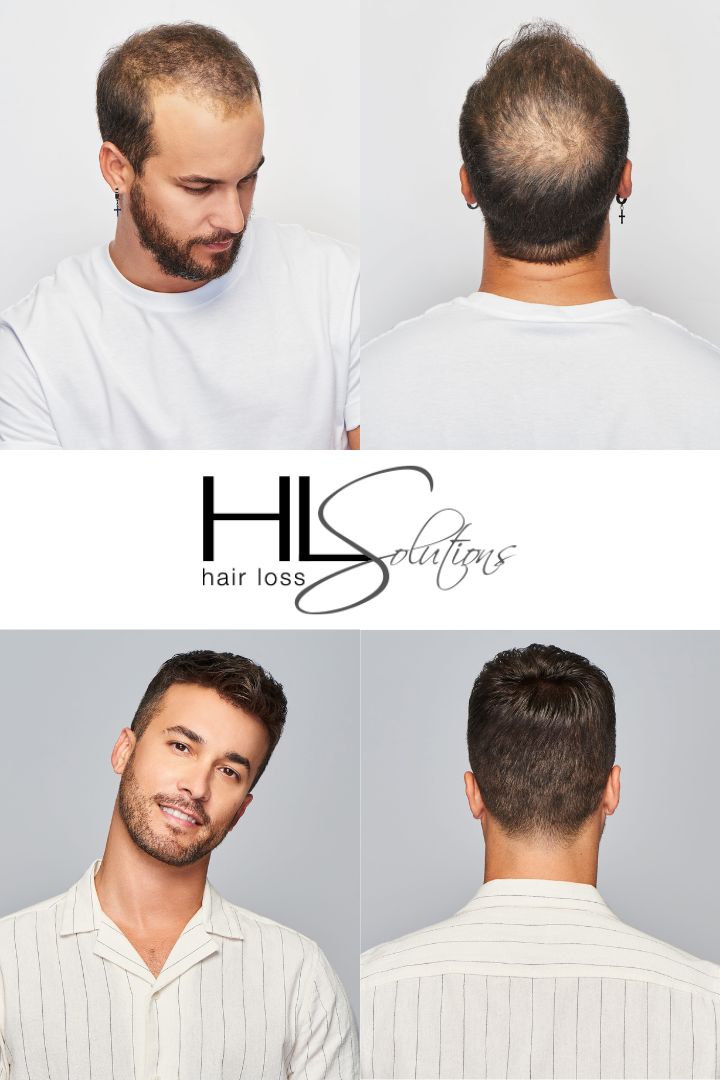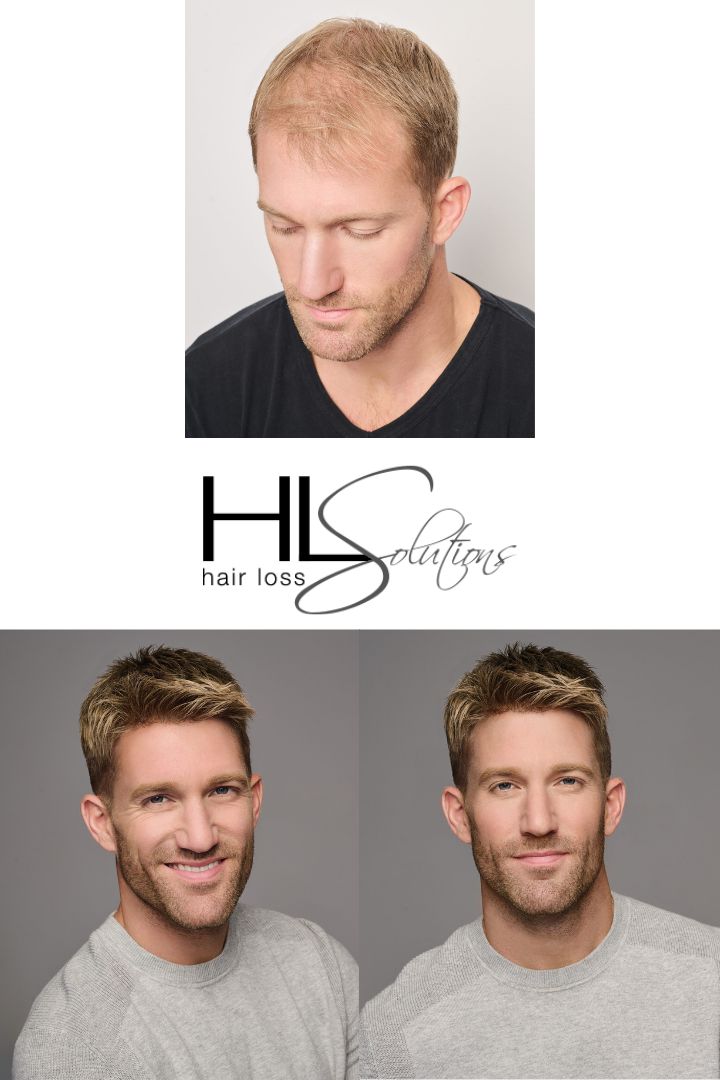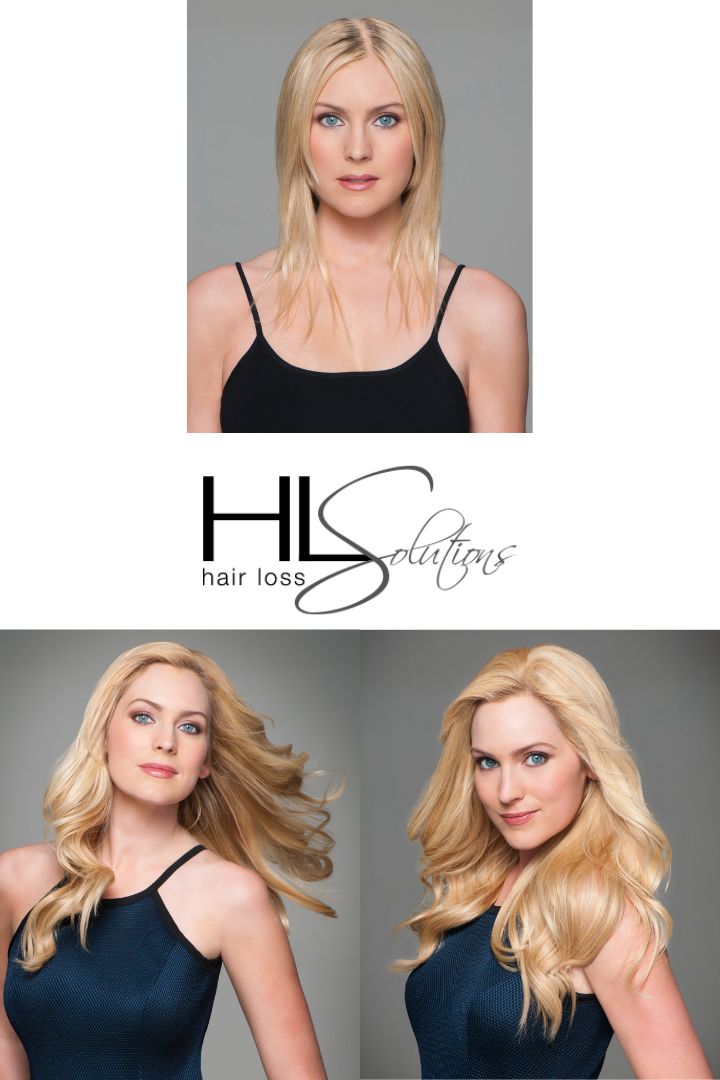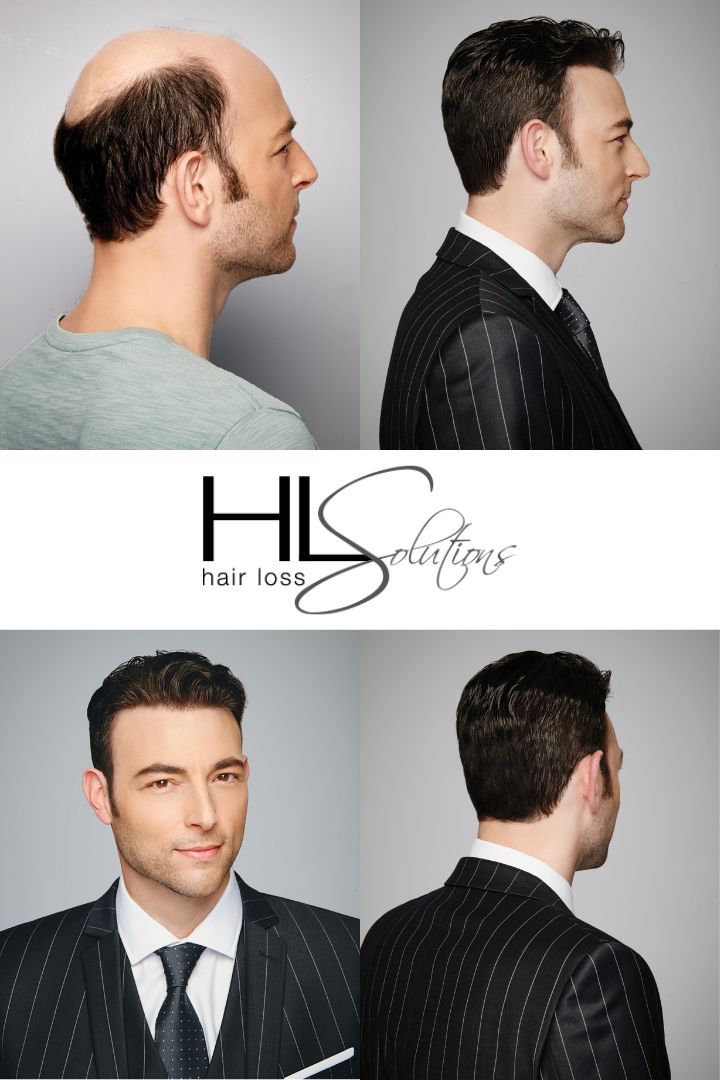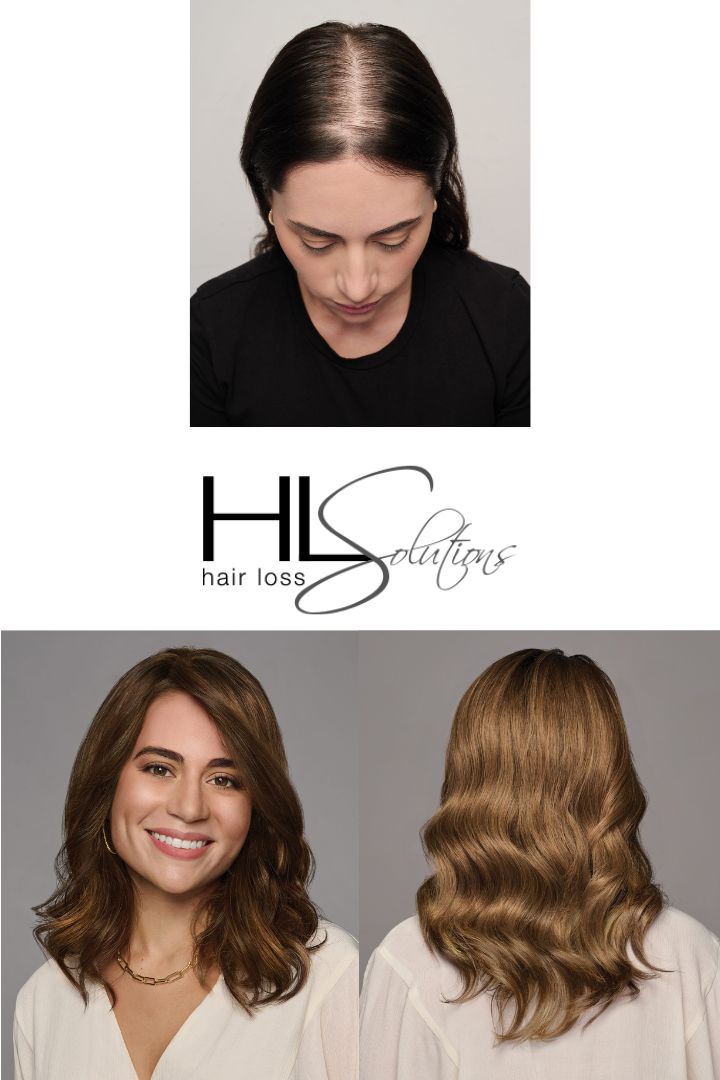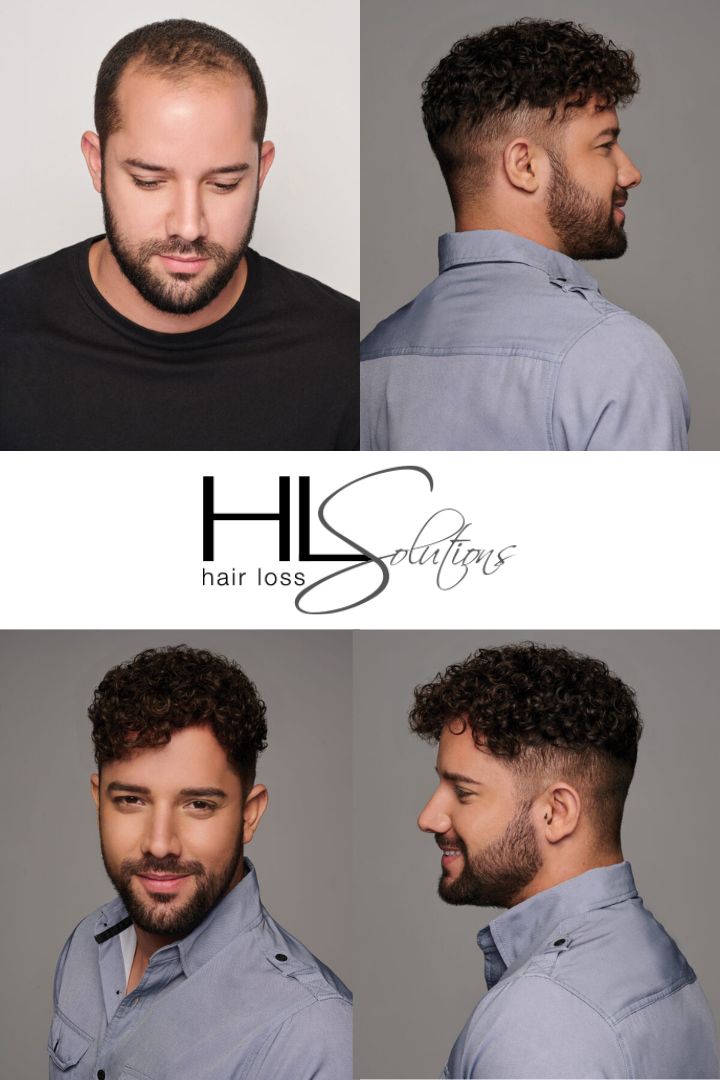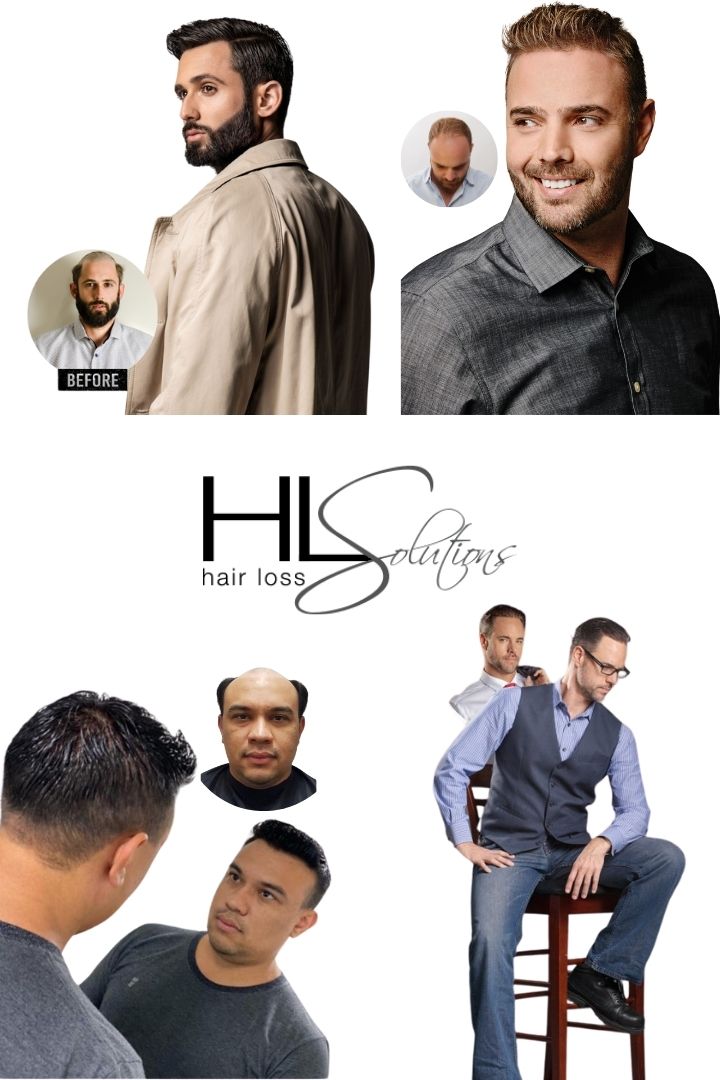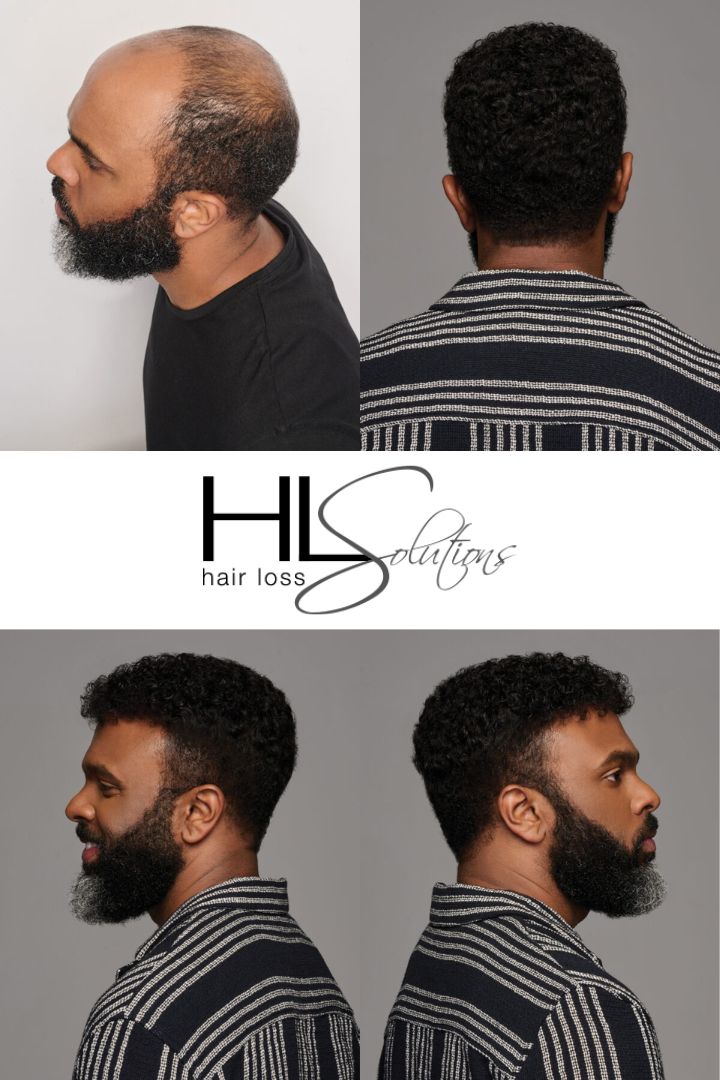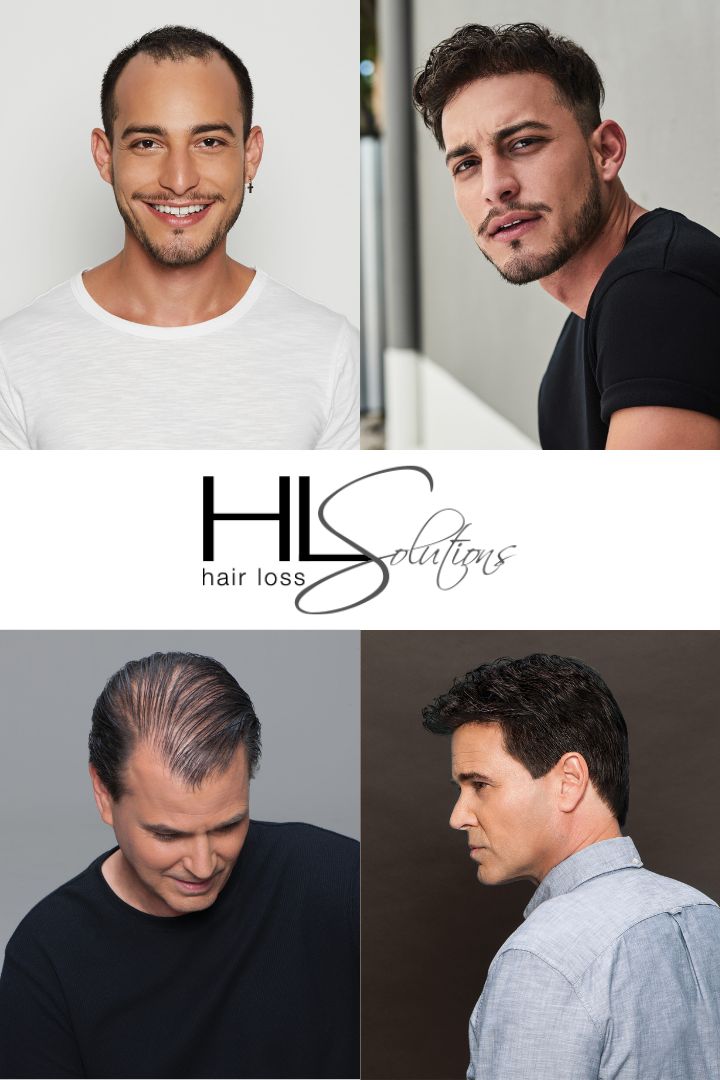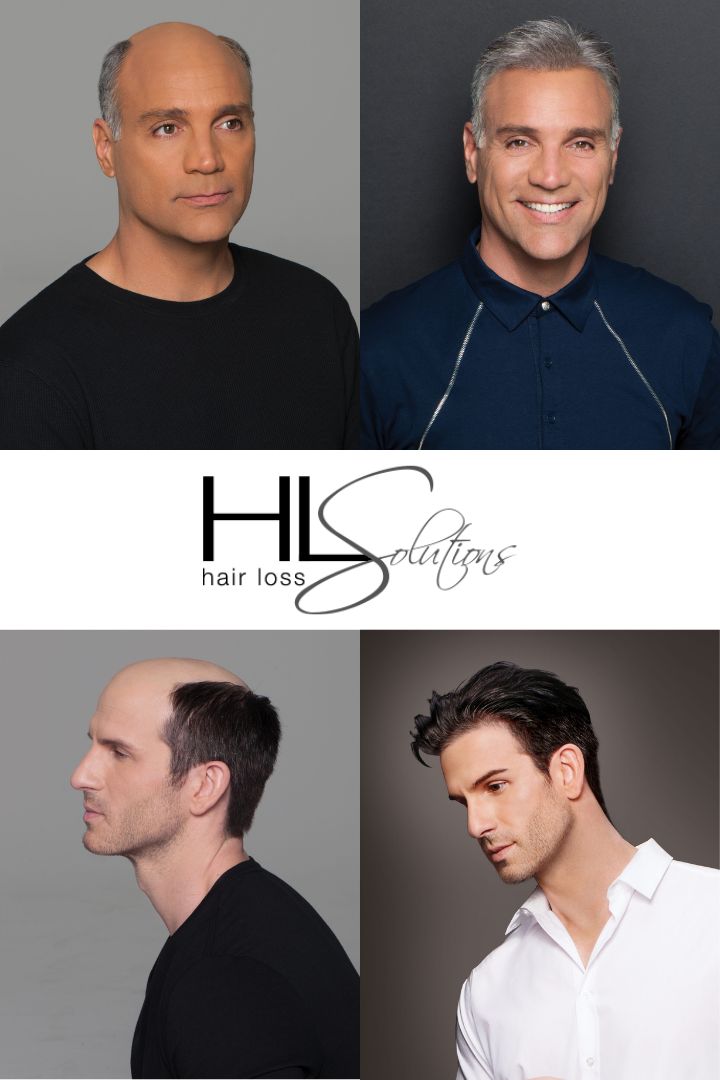Hair Loss Solutions, Inc.
Hair Loss Solutions, Inc.

Welcome to Hair Loss Solutions, Inc., where we offer hope and proven hair restoration methods in Vadnais Heights, MN, and the greater Twin Cities area. Founded by Chrissy 17 years ago, our mission is simple: to provide personalized care and instill confidence through genuine compassion.
Our tranquil studio space ensures a relaxing environment where you can feel pampered and at ease throughout your journey. We uphold the highest standards of non-surgical hair replacement, offering a comprehensive approach that includes topical thickening products, laser therapy, wigs, extensions, human hair toppers, and custom hair systems—all meticulously tailored to your preferences and lifestyle.
With a thorough consultation, we assess your scalp and follicles using specialized lenses and collaborate with you to determine the best course of action for achieving your hair restoration goals. Don’t let hair loss diminish your confidence. Schedule your consultation today and take the first step towards reclaiming your natural hairline and revitalizing your appearance with Hair Loss Solutions, Inc.
Let’s Get Social
Review us on Google
At Hair Loss Solutions, Inc., we’re here to help you feel confident and empowered. Led by Christine Tebben, we are dedicated to addressing hair loss with care and expertise.
Located in the heart of Vadnais Heights, Minnesota, our salon is a welcoming space for anyone experiencing hair loss. We offer specialized treatments and solutions tailored to your needs, so you can feel like yourself again.
At Hair Loss Solutions, Inc., we prioritize your comfort and well-being. We are committed to providing personalized care and support, ensuring you feel valued every step of the way.
When you choose Hair Loss Solutions, Inc., you’re embarking on a journey toward renewed confidence and self-assurance. With Christine Tebben’s guidance, we offer comprehensive solutions for hair loss, making your experience more than just a salon visit – it’s an opportunity for self-discovery and empowerment.
Plan your visit, check the weather at our location
Get directions to our location here
Make sure we are going to be there for you, check our hours
Plan your visit, check the weather at our location
Get directions to our location here
Make sure we are going to be there for you,
check our hours
| Monday | 10:00am – 6:00pm | |
| Tuesday | 10:00am – 6:00pm | |
| Wednesday | 10:00am – 2:00pm | |
| Thursday | 10:00am – 6:00pm | |
| Friday | 10:00am – 2:00pm | |
| Saturday | Closed | |
| Sunday | Closed |
Featured Videos
Featured Videos
Reach out to us today
Reach out to us today
Our Services
- Custom Non-Surgical Hair Replacement
- Hair Loss Control Products
- Laser Hair/Scalp Therapy
- Custom Hair Replacement
- Scalp Care
- Daily Care Wet Products
- Hair Regrowth Products
- Hair Extensions
- Wigs & Toppers
Location Features
- By Appointment Only
- Free WiFi Internet
- Free Parking
- Credit Cards Accepted
FAQ’s
Click on a tab below to reveal the information.
Alopecia is a condition of hair loss that can vary in severity, from patches that come and go to a permanent, total lack of hair. Many believe that this is why any choices that you consider must allow for exactly what is happening to you and how you want to look.
There are three main types of alopecia:
Androgenetic Alopecia: Sometimes referred to as female pattern thinning, this type of alopecia is generally attributed to hereditary and genetic factors. The hair becomes thinner all over the head. Unlike
Alopecia areata: patches of hair missing on the scalp and body
Alopecia totalis: baldness on the scalp only
Alopecia universalis: baldness on the scalp and body
CANCER. The word alone creates fear and confusion. Patients face not only the uncertainty of their disease, but also the anxiety of treatment—particularly hair loss.
This article provides facts about the relationship between chemotherapy, radiation therapy and hair loss. Its aim is to provide you with the information you need, using non-medical language, to understand what is happening to your hair, and why.
Chemotherapy consists of the administration of drugs that destroy rapidly reproducing cancer cells.
Cancer cells are some of the most rapidly reproducing cells in the body, but other cells, such as those
which contribute to the formation of hair shafts and nails, are also rapidly reproducing. Unfortunately, while chemotherapy drugs preferentially destroy cancer cells, the drugs also can destroy those cells responsible for normal growth of hair and nails. Cancer patients sometimes shed the hair and nails during treatment. Chemotherapy drugs are poisonous to the cells of the hair root responsible for hair shaft formation. Usually, the hair is lost rapidly in large quantities during treatment.
No hair growth stimulants, shampoos, conditioners, or other cosmetic treatments can prevent or retard chemotherapy related hair loss. The good news, however, is that once chemotherapy is completed, the hair usually grows back. This “grow back” period can take anywhere from 12 to 18 months.
What About Insurance?
Your insurance may cover the cost of a medical wig or hair prosthesis (prosthetic hair system). Be sure to check with your insurance agent to find out about your exact coverage and benefits.”
Hair Growth
Hair grows from the root, from the hair follicle, where a constant process of cell division occurs. Amino acids taken from blood feeding the follicle join with dividing cells, resulting in cell chains. Eventually these cell chains link up with one another, resulting in a long fiber. At this point, the nucleus of the original cell is dead, and the amino acids have formed into a hard keratin.
Keratin is a protein, and it is the substance our hair and nails are made from. It is a lifeless substance that results from the “pushing” of newly forming cells in the follicle. As the keratin protein is pushed out, our hair grows from the root. The growth of our hair follows a cyclical pattern that is one of the body’s most active “growing” processes: building shafts of hair for a period of time, and then resting.
Anti-cancer Drugs
Cancer is a condition of uncontrolled cell growth. Anti-cancer drug administration aims to reduce or stop this process. However, anti-cancer drugs act on both normal and cancerous cells, and are most likely to destroy cells that reproduce quickly. Hair follicles divide rapidly, which is why they are affected by chemotherapy. At any one time, about 85% of scalp hair follicles are reproducing.
Because a variety of drugs are used for chemotherapy treatment, hair loss depends upon the type prescribed and the dosage. Not all chemotherapy causes hair loss and, except in rare instances, hair loss is temporary. When treatment is completed, the hair follicles will resume processing amino acids from your blood and creating new hair for you.
Radiation Therapy
Radiation therapy employs high-energy radiation to inhibit the growth and division of cancer cells. It destroys all cells’ ability to grow and multiply in the area of application; however, cancer cells are more sensitive to radiation than normal cells. If treatment is applied as a cancer cell is about to reproduce it will prevent the cell from doing so, and the cell will die. Still, radiation therapy can sometimes affect normal tissue, causing side effects. One possible result of treatments to the head and neck is hair loss. Some or all of your hair in the area being treated may be lost. But, in most cases, hair growth will resume at the end of the treatment cycle.
Plan Ahead for Your Treatment
Assume you will lose all of your hair when you begin chemotherapy treatment. By doing so your advance planning will assist you considerably. (Custom made wigs and hair prosthetics may take from 6 weeks to 4 months to be delivered and made for you.)
Your first wig or hair prosthesis should duplicate your hair as closely as possible. (Be conservative in color, length, thickness and style.)
In chemotherapy related hair loss avoid the following: weaves, hair extensions, hair integration and hair intensifiers. You will require a full prosthesis and not a partial hairpiece.
Hair Loss Alternatives
There are several options for dealing with hair loss once it occurs. You may choose to cover your head with a hat, scarf or turban. Or, you may choose to replace your hair either with a medical wig or a prosthetic hair system.
If you choose to replace your hair, you’ll be happy to know that fake-looking wigs are a thing of the past. New technologies have made both human hair wigs and synthetic wigs appear highly realistic because they can be fitted to the shape of your head. Human hair wigs are typically more expensive and require more maintenance. Synthetic wigs are less expensive (although some special models are more expensive), and are easier to style and wash. Synthetic wigs also dry more quickly, and require less care.
Put simply, it means the study of hair and the scalp. It’s all about hair and scalp wellness, and at Emerge Trichology Hair Restoration Center, that is our focus.
Yes, in most cases if you catch it early enough, you can halt or at least slow down the progression of hair loss. In some cases, you can even reverse your hair loss and regain thicker, fuller hair.
FAQ’s
Click on a tab below to reveal the information.
Alopecia is a condition of hair loss that can vary in severity, from patches that come and go to a permanent, total lack of hair. Many believe that this is why any choices that you consider must allow for exactly what is happening to you and how you want to look.
There are three main types of alopecia:
Androgenetic Alopecia: Sometimes referred to as female pattern thinning, this type of alopecia is generally attributed to hereditary and genetic factors. The hair becomes thinner all over the head. Unlike
Alopecia areata: patches of hair missing on the scalp and body
Alopecia totalis: baldness on the scalp only
Alopecia universalis: baldness on the scalp and body
CANCER. The word alone creates fear and confusion. Patients face not only the uncertainty of their disease, but also the anxiety of treatment—particularly hair loss.
This article provides facts about the relationship between chemotherapy, radiation therapy and hair loss. Its aim is to provide you with the information you need, using non-medical language, to understand what is happening to your hair, and why.
Chemotherapy consists of the administration of drugs that destroy rapidly reproducing cancer cells.
Cancer cells are some of the most rapidly reproducing cells in the body, but other cells, such as those
which contribute to the formation of hair shafts and nails, are also rapidly reproducing. Unfortunately, while chemotherapy drugs preferentially destroy cancer cells, the drugs also can destroy those cells responsible for normal growth of hair and nails. Cancer patients sometimes shed the hair and nails during treatment. Chemotherapy drugs are poisonous to the cells of the hair root responsible for hair shaft formation. Usually, the hair is lost rapidly in large quantities during treatment.
No hair growth stimulants, shampoos, conditioners, or other cosmetic treatments can prevent or retard chemotherapy related hair loss. The good news, however, is that once chemotherapy is completed, the hair usually grows back. This “grow back” period can take anywhere from 12 to 18 months.
What About Insurance?
Your insurance may cover the cost of a medical wig or hair prosthesis (prosthetic hair system). Be sure to check with your insurance agent to find out about your exact coverage and benefits.”
Hair Growth
Hair grows from the root, from the hair follicle, where a constant process of cell division occurs. Amino acids taken from blood feeding the follicle join with dividing cells, resulting in cell chains. Eventually these cell chains link up with one another, resulting in a long fiber. At this point, the nucleus of the original cell is dead, and the amino acids have formed into a hard keratin.
Keratin is a protein, and it is the substance our hair and nails are made from. It is a lifeless substance that results from the “pushing” of newly forming cells in the follicle. As the keratin protein is pushed out, our hair grows from the root. The growth of our hair follows a cyclical pattern that is one of the body’s most active “growing” processes: building shafts of hair for a period of time, and then resting.
Anti-cancer Drugs
Cancer is a condition of uncontrolled cell growth. Anti-cancer drug administration aims to reduce or stop this process. However, anti-cancer drugs act on both normal and cancerous cells, and are most likely to destroy cells that reproduce quickly. Hair follicles divide rapidly, which is why they are affected by chemotherapy. At any one time, about 85% of scalp hair follicles are reproducing.
Because a variety of drugs are used for chemotherapy treatment, hair loss depends upon the type prescribed and the dosage. Not all chemotherapy causes hair loss and, except in rare instances, hair loss is temporary. When treatment is completed, the hair follicles will resume processing amino acids from your blood and creating new hair for you.
Radiation Therapy
Radiation therapy employs high-energy radiation to inhibit the growth and division of cancer cells. It destroys all cells’ ability to grow and multiply in the area of application; however, cancer cells are more sensitive to radiation than normal cells. If treatment is applied as a cancer cell is about to reproduce it will prevent the cell from doing so, and the cell will die. Still, radiation therapy can sometimes affect normal tissue, causing side effects. One possible result of treatments to the head and neck is hair loss. Some or all of your hair in the area being treated may be lost. But, in most cases, hair growth will resume at the end of the treatment cycle.
Plan Ahead for Your Treatment
Assume you will lose all of your hair when you begin chemotherapy treatment. By doing so your advance planning will assist you considerably. (Custom made wigs and hair prosthetics may take from 6 weeks to 4 months to be delivered and made for you.)
Your first wig or hair prosthesis should duplicate your hair as closely as possible. (Be conservative in color, length, thickness and style.)
In chemotherapy related hair loss avoid the following: weaves, hair extensions, hair integration and hair intensifiers. You will require a full prosthesis and not a partial hairpiece.
Hair Loss Alternatives
There are several options for dealing with hair loss once it occurs. You may choose to cover your head with a hat, scarf or turban. Or, you may choose to replace your hair either with a medical wig or a prosthetic hair system.
If you choose to replace your hair, you’ll be happy to know that fake-looking wigs are a thing of the past. New technologies have made both human hair wigs and synthetic wigs appear highly realistic because they can be fitted to the shape of your head. Human hair wigs are typically more expensive and require more maintenance. Synthetic wigs are less expensive (although some special models are more expensive), and are easier to style and wash. Synthetic wigs also dry more quickly, and require less care.
Put simply, it means the study of hair and the scalp. It’s all about hair and scalp wellness, and at LaDonna Roye, that is our focus.
Yes, in most cases if you catch it early enough, you can halt or at least slow down the progression of hair loss. In some cases, you can even reverse your hair loss and regain thicker, fuller hair.

